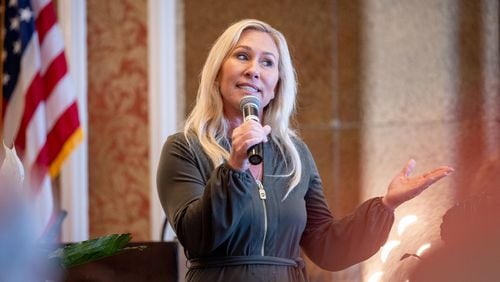New research from Duke University Medical Center in Durham, North Carolina, suggests anxiety may be a major risk factor of problematic marijuana use in early adulthood.
The research, published last month in the "Journal of the American Academy of Child and Adolescent Psychiatry," involved 1,229 participants enrolled in the Great Smoky Mountains Study, a 20-year cohort study that followed participants between 1993 and 2015.
The Great Smoky Mountain Study is part of a collaborative effort between Duke University and the North Carolina State Division of Developmental Disabilities, Mental Health and Substance Abuse Services.
One of its primary goals is to estimate the number of youth with emotional and behavioral disorders and the persistence of those disorders over time, according to the study website.
To study risk factors for problematic cannabis use, researchers examined the Great Smoky Mountains participants annually from ages nine and 16 years and then again at ages 19, 21, 26 and 30 years and logged patterns of problematic cannabis use.
Problematic cannabis use refers to the daily consumption of marijuana or a habit that meets diagnostic guidelines for addiction (cannabis use disorder).
The researchers split the participants’ cannabis use into the patterns described in the Diagnostic and Statistical Manual of Mental Disorders 5.
Patterns of problematic use, according to the DSM-5:
- Non-problematic use in adolescence (19-21) and early adulthood (26-30)
- Limited problematic use in late adolescence only and persistent problematic use in late adolescence and early adulthood
- Delayed problematic use in early adulthood only
Using pairwise associations to identify risk profiles associated with patterns of problematic cannabis use in early adulthood, the researchers also examined multiple risk factors, such as psychiatric disorders, other substance use, education, challenging social factors (low socioeconomic status, family issues) and additional demographics.
What the researchers found
More than three quarters (76.3 percent) of the participants in the study did not develop problematic use of cannabis during their late adolescence or early adulthood.
But one quarter of the participants did develop problematic use of cannabis and researchers found they had distinctive risk profiles.
This group was divided into the three pattern categories: persistent problematic cannabis use, limited problematic cannabis use and delayed problematic cannabis use.
Persistent problematic use
For persistent users (those with the most problematic use of marijuana, sometimes beginning as early as age 9), the problems continued into early adulthood.
What's most important, Sherika Hill — adjunct faculty associate at Duke University School of Medicine and lead author of the study — told Medical News Today, is that 27 percent of persistent users reported anxiety disorders as children and 23 percent reported anxiety disorders as older teens or during college years (up to age 21).
This group also had the highest levels of psychiatric disorders.
“This suggests,” Hill said, “that a focus on mental health and well-being could go a long way to prevent the most problematic use.”
Limited problematic use
The group with limited problematic use surprisingly reported the most childhood family instability and dysfunction of the three, factors usually linked with a higher level of drug use, the researchers found.
But limited users tended to have more cannabis use issues as preteens, teens and early adolescents and fell off the habit as they got older.
Delayed problematic use
And lastly, most of the participants in the group of delayed users with little to no cannabis use in adolescence and early adulthood but problematic use between age 26 and 30, experienced bullying and mistreatment as children.
Why did childhood bullying and mistreatment not lead to earlier problematic cannabis use? The researchers don’t really know.
Hill told Medical News Today about the motivation behind the new study is that most of the current policies and interventions on cannabis use are aimed at early adolescents.
“We have to start thinking about how we are going to address problematic use that may arise in a growing population of older users. Given that more states may be moving towards legalization of cannabis for medicinal and recreational purposes, this study raises attention about what we anticipate will be the fastest growing demographic of users — adults.”






